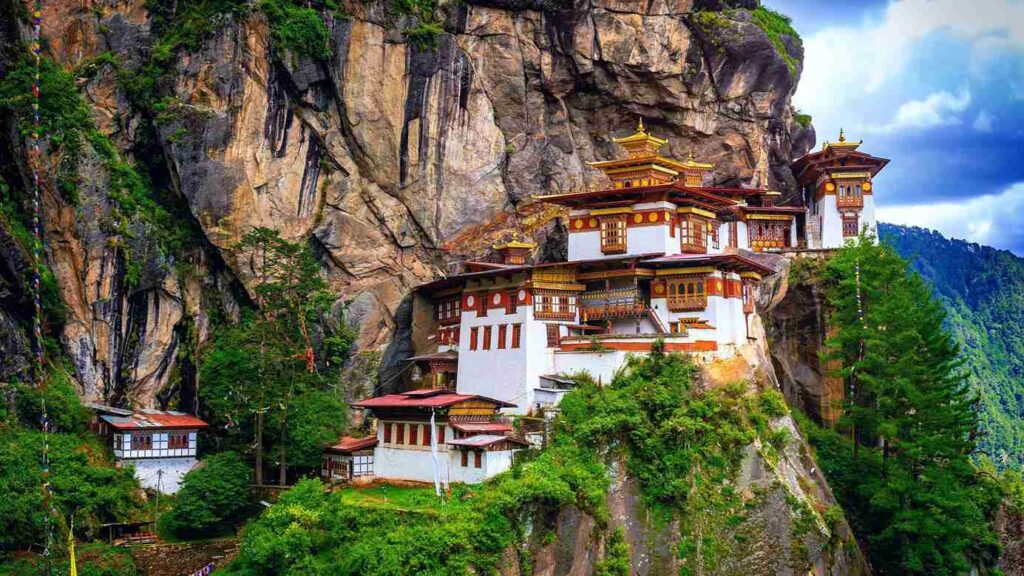Paro, Bhutan – Travel Tips
Category
Categories
Popular Articles

**Overview of the Destination:**
Paro, Bhutan is a charming town perched in the mighty Himalayas. Its biggest claim to fame is arguably the stunning Tiger’s Nest Monastery that clings impossibly to a sheer cliff face. But beyond this iconic site, Paro offers a peaceful atmosphere, unpolluted air, cobbled stone streets, and traditional architecture that reflects Bhutan’s ageless culture and timeless traditions. It’s also well-regarded for its fertile valleys producing red rice – Bhutan’s staple food, and apple orchards.
**Best Time to Visit:**
The best time to visit Paro is during spring (March to May) and fall (September and October). During these periods, the temperature is moderate, and the skies are clear, offering breathtaking views of the snow-capped mountains. The Paro Tshechu, one of Bhutan’s grandest festivals, occurs typically in late March or early April, showcasing vibrant cultural performances and mask dances. If you don’t mind colder temperatures, visiting in the winter (December to February) can have its own charm with fewer tourists.
**Climate & What to Pack:**
Paro enjoys a temperate climate with warm summers (up to 30°C) and chilly winters (down to -5°C). During spring and autumn, temperatures tend to be mild. A comfortable pair of walking shoes is essential given the hilly terrain and outdoor activities. Ensure to bring warm clothing if you plan to visit in winter or trek to higher altitudes, even in summer. Sunscreen, hats, and sunglasses are also advisable due to the strong high-altitude sun.
**Getting There:**
Paro International Airport is Bhutan’s only international airport. Druk Air and Bhutan Airlines are the two carriers offering flights from India, Nepal, Thailand, and Bangladesh. When landed, you can hire a taxi or arrange a hotel pick-up. As for visas, all foreign nationals, except Indian, Bangladeshi, and Maldivian passport holders, need to get a visa before visiting Bhutan.
**Getting Around Locally:**
Public transportation is somewhat limited in Paro. The most efficient way to get around is by hiring a taxi or renting a car with a driver, as self-driving for tourists isn’t permitted in Bhutan. Biking is also an excellent option for exploring the beautiful valleys around the town.
**Safety Tips:**
Paro is considered a safe destination with low crime rates. However, like any tourist location, be mindful of your belongings. Do respect the local customs and culture, especially when visiting religious sites. Women traveling solo generally find Bhutan welcoming and accommodating, but it’s always smart to stay aware of your surroundings and use common sense.
**Top Things to Do & See:**
Apart from the must-visit Tiger’s Nest Monastery, Rinpung Dzong, a fortress-monastery overlooking the Paro valley, also worth your time. The National Museum of Bhutan and Paro Dzong stand as eminent symbols of Bhutanese architecture. Don’t miss a stroll down Paro’s main street, featuring delightfully quirky shops and restaurants.
**Where to Stay:**
Paro has a range of accommodations suiting all budgets. For luxury stays, consider options like Le Meridien and Zhiwa Ling. For mid-range, Tashi Namgay Resort, and Hotel Rema offer good value. There are also budget-friendly hostels like Khang Residency and The Village Lodge. Try to stay close to the town center for easy accessibility to local shops and restaurants.
**Food & Local Cuisine:**
Bhutanese cuisine is a heavenly blend of hot chilies and cheese. Don’t leave without trying Ema Datshi (chili and cheese stew), Phaksha Paa (pork with red chilies), and Red Rice. Paro’s main street has many restaurants serving local and international cuisines. Alternatively, street food can be a good avenue to sample different local dishes.
**Cultural & Practical Tips:**
Currency in Bhutan is the Ngultrum, accepted throughout the city. English is widely spoken in major tourist areas. Tipping is not customary but is certainly appreciated. Power sockets are type D and F, and the standard voltage is 230 V. Wi-Fi can be limited outside of your accommodations or higher-end restaurants.
**Sustainable or Responsible Travel Tips:**
Support local by shopping for souvenirs or eating at local restaurants. Be sure to respect the local customs – modest clothing is recommended, especially when visiting religious sites. Always remember to ask before photographing people.
Here’s my personal tip for first-time visitors – don’t rush your visit, take time to slow down, soak up the tranquility, and engage with the friendly locals. Paro is a place that is best enjoyed at a leisurely pace. Be open to the spiritual energy of the place, and you’re bound to leave with a serene mind and full heart. Safe travels!










